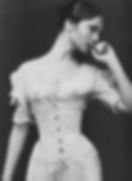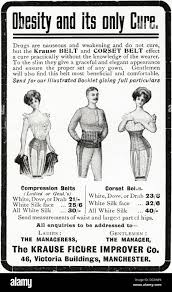Ditching the Corset: Rethinking Core Activation in Pilates
- Sheela Cheong
- May 11
- 7 min read
Updated: Jun 21
💬 Common “Corset” or Compression-Focused Core Cues
“Pull your waist in like you're tightening a corset”
“Imagine zipping up a tight pair of jeans”
“Draw your navel to your spine”
“Cinch your waist like a drawstring bag”
“Scoop your belly in and up”
“Hollow out your abdominals”
“Shrink your waist two sizes”
“Imagine lacing up a Victorian corset” (yes, some say this literally)
These phrases are often meant to describe the engagement of deep abdominal muscles like the transversus abdominis (TVA). But the metaphor we use to describe the core doesn’t just shape how we teach—it shapes how people breathe, stabilise, and understand their own bodies.

The corset cue didn’t appear out of nowhere. Its roots lie in a long, complex history of body shaping, posture control, and social ideals—from Renaissance fashion to military discipline, Victorian medicine, and modern fitness culture. And while the imagery can be helpful in some contexts, it also carries unintended baggage: constriction, compression, and a narrowed view of core function.
In this article, we’ll look at:
The history of the corset, and how its legacy influenced modern core cues
What it gets right about the deep core
Why it may be time to move on from this metaphor
What we can say instead—based on breath, pressure, and pelvic balance
The Hidden History of the Corset: Beauty, Health, Status & Gender
The corset was not just a fashion item—it carried connotations of beauty, health, status, and respectability. Its history reflects the evolving roles of gender, social expectations, and medical perceptions. Let’s break it down:

16th – 18th Century: Corsets as Fashion and Symbol of Beauty
16th Century: Corsets were initially introduced in Europe as part of women’s fashion. They shaped the body into an idealised form of the time—an hourglass silhouette that emphasised a narrow waist and full hips.

17th – 18th Century: By this period, corsets became more structured, often made of whalebone or steel, used not only for shaping but also for posture correction. Upper-class women wore them to project an image of refined beauty and social status.

Corsets for Men: Posture, Power & Authority
17th – 18th Century (Men): In European courts—especially in France and England—male aristocrats and military men wore stiffened garments like corsets and stays. These were not for feminised beauty, but for posture, poise, and social dominance. A cinched waist and lifted chest symbolised discipline, composure, and elite status. These garments also reflected military ideals of bearing and control.

19th Century (Men): Men’s corsets evolved into more functional garments such as belt corsets, worn by professionals for postural support during long hours of standing or sitting.
These were also marketed as orthopaedic aids for digestion, back pain, and weight control. While women’s corsets were about emphasising curves, men’s corsets were used to flatten the stomach, lift the chest, and create a rigid frame—values that echo through modern fitness culture’s obsession with flat abs and tight cores.
19th Century: Corsets as Health, Function, and Control
Early 19th Century: Corsets were often marketed as medical aids, claimed to correct posture, improve digestion, and even aid in weight loss. This period saw corsets become a tool for both health and social expectations, with advertisements promoting them as essential for proper bodily function.
Beyond fashion, corsets were part of a broader framework of bodily control. Children were sometimes prescribed stays to correct poor posture or prevent spinal deformities, a practice that blended orthopaedics with moral discipline. In military settings, corset-like supports became standard issue for soldiers—not for aesthetics, but to enforce upright posture under physical strain and hierarchical scrutiny.
Even in medicine, surgeons used corsets post-operatively to restrict movement and protect healing tissue, especially following abdominal or spinal procedures. The corset was not only about shape—it was about restraint, recovery, and obedience to external ideals of order.

Mid 19th Century: The industrial revolution brought new social pressures. Women’s corsets became tighter, designed to achieve a more exaggerated hourglass figure. This was the time when corsets were fully associated with beauty and social respectability. However, medical concerns about the negative effects of tight corsets began to emerge, with doctors warning about their potential to cause organ compression, restricted breathing, and even internal injuries.
20th Century: Gender, Health, and the Rise of Modern Pilates
Early 20th Century:
As women's rights movements gained momentum, corsets began to be rejected as symbols of oppression. The idea of female beauty was evolving, and the corset was seen as a tool for confinement rather than liberation. However, its associations with idealised body shapes still lingered.
Mid 20th Century: In the 1920s and 1930s, the focus shifted toward a more natural, athletic body. Joseph Pilates, the creator of the Pilates method, developed a system centred around dynamic movement, core strength, and mind-body awareness.
His method was not about constricting or shaping the body externally like a corset, but about developing internal support through strength, mobility, and breath. Proper breathing was central to his work — not just as a way to oxygenate the body, but as an active tool for rhythm, control, and core engagement.
(Fun fact: Although Joseph Pilates emphasised proper breathing, he did not teach lateral breathing as it is often portrayed in modern Pilates practice.)

Late 20th Century: Pilates became more mainstream, and the corset metaphor started to gain traction in Pilates teachings. This imagery was used as a simple cue to describe TVA activation, helping students understand core engagement. But by this point, the corset metaphor had become largely divorced from its historical function of constriction, now used as a metaphor for deep core stabilisation.
What the Corset Metaphor Gets Right
The corset metaphor has some merit in that it highlights the importance of engaging the deep core (the TVA) for stabilisation. It also suggests the idea of internal support, which is central to Pilates practice. However, the corset implies an image of compression—which is often at odds with the principles of breath and dynamic movement in Pilates.
🔍 Criticism of the Corset Cue
At first glance, the corset image might seem helpful. It conveys structure, containment, and support. But the body isn’t made of whalebone and laces—it’s made of breath, fascia, muscle, and responsive pressure systems.
When we say “brace like a corset” or “zip up the waist,” students often default to rigidity and shallow breathing, which directly contradicts the principles of functional core support in Pilates.
🫁 How the Corset Cue Affects Breathing
Students cued to “tighten like a corset” often:
Over-brace around the whole torso, not just the front
Overuse the obliques and outer abdominals
Reduce ribcage mobility
Limit diaphragmatic movement
Hold their breath or create shallow, high-chest breathing
This results in:
A frozen ribcage
A stiff abdominal wall
Loss of intra-abdominal pressure regulation
Disconnection between breath and support
In Pilates, breath and support must move together. We rely on ribcage mobility and diaphragmatic descent to create a balanced, dynamic core. But the corset image encourages students to do the opposite: brace inward, restrict movement, and sacrifice breath.
🎯 But Isn’t the TVA a Natural Corset?
Yes—but not in the way a corset works.
The transversus abdominis (TVA) is often compared to a corset because it:
Wraps around the torso horizontally
Supports spinal stability
Helps regulate intra-abdominal pressure
However, unlike a literal corset, the TVA is:
Responsive, not rigid
Coordinated with the breath, not separate from it
Designed to move with you, not hold you still
When working well, the TVA:
Activates gently on the exhale
Releases slightly on the inhale to allow breath to expand
Supports the diaphragm, pelvic floor, and multifidus in a balanced pressure system
If students interpret “corset” as something to pull tighter and tighter, they may:
Brace superficially
Mistake tightness for strength
Lose responsiveness and breath coordination
🧠 Think of the TVA like a woven hammock—not a steel cage. It adjusts with movement, provides subtle resistance, and allows the spine to feel held but free.
⚠️ The Core Problem with the Cue
The problem isn't the anatomical truth (the TVA does wrap like a corset), but the imagery and mental model we give students.
A corset implies:
Squeezing inward
Staying rigid
Holding shape from the outside-in
But the goal of core work in Pilates is:
Internal support that adapts to breath and movement
Balanced pressure, not restriction
Spacious strength, not clenching

Replacing the Corset Image: The Soda Can Analogy
Instead of imagining the core as something to be tightly cinched, a more accurate and functional visual is to think of it as a soda can — a structure designed to maintain its shape and internal pressure through balanced support in all directions.
Top of the can = Diaphragm
Bottom of the can = Pelvic floor
Sides of the can = Transversus abdominis (TVA) and obliques
Back of the can = Multifidus and deep spinal stabilisers
Centre of the can = Spine (like a straw running through the middle)
This metaphor gives a three-dimensional understanding of core support. It highlights that intra-abdominal pressure (IAP) is not about pulling inward, but about coordinated support from top, bottom, front, back, and sides working together.
When this balance is in place, the “can” remains upright and stable — providing strength, support, and resilience. If one part gives way (e.g., weak pelvic floor, collapsed diaphragm, or underactive back muscles), the pressure becomes uneven, and the “straw” (spine) becomes vulnerable to buckling or stress.
Key Cues for Core Engagement
"Wrap your core": Engage your entire torso — front, back, and sides — as though wrapping your body with a wide belt, promoting balanced stability without simply tightening.
"Expand your ribs": Focus on lateral ribcage expansion, ensuring core engagement supports, not restricts, your breath.
"Spine as the straw": Imagine your spine as the central straw running through the middle of a soda can, with your entire core working together to support and stabilise it.
Conclusion
The corset metaphor served a useful purpose in the past, but it’s time to evolve our language and move towards more functional, breath-friendly imagery. The soda can analogy gives a clearer picture of how the core stabilises, emphasising 360-degree engagement. By moving away from constricting metaphors, we can teach a more holistic and dynamic approach to core stability that aligns with the principles of Pilates: strength, flexibility, and breath.
















